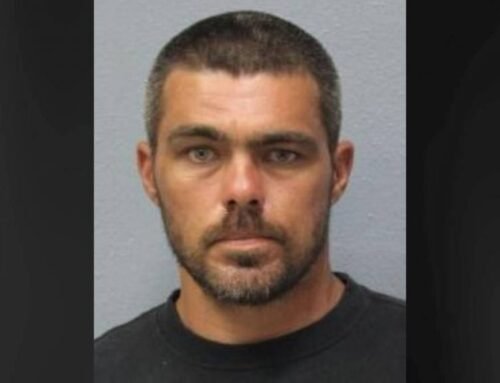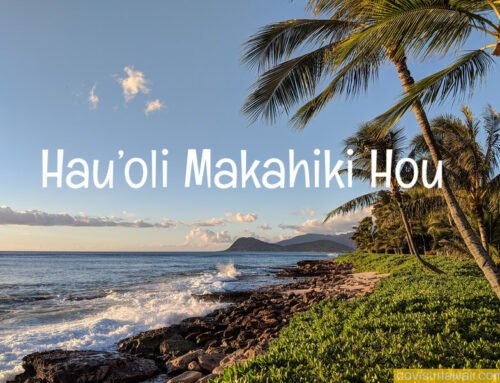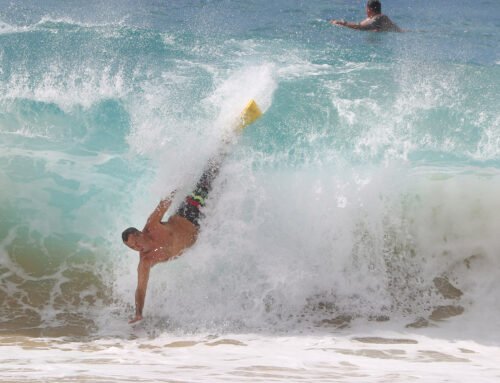Just before Tsofit Ohayon left prison, she had a session with relatives, friends and members of her support network who helped her seek reconciliation and set goals for her future.
The session was a “huikahi restorative circle,” a program designed and run by Hawaii Friends of Restorative Justice meant to prepare inmates for release through a meeting with loved ones moderated by a trained facilitator.
The nonprofit says 200 inmates have been through the circles since 2005 and they have helped reduce recidivism. But despite the fact the Legislature appropriated $200,000 last year to expand the program, the money hasn’t been awarded.


The Department of Public Safety, which is tasked with awarding the funds, says bidders haven’t met the requirements of a request for proposals process.
But proponents say the requirements are too restrictive and feel their bids for funding have been unjustly denied.
“I don’t understand in any case how this is serving the people that are the clients and the wards of the state when that was the original intention of these funds,” said Chas Williams, executive director of Worknet, which provides reentry services and submitted a bid for funding in partnership with Hawaii Friends of Restorative Justice. “They have pretty much refused to actually release the funding.”
Huikahi Circles
In Hawaiian, hui means group and kahi means individual. In the context of the restorative justice program, “huikahi” means “coming together to form a covenant,” Lorenn Walker, executive director of Friends of Hawaii Restorative Justice, wrote in a 2010 academic article about the program.
Each circle, which is held just before an inmate’s release date, involves the incarcerated person, family members, friends, at least one prison representative, a certified facilitator and a recorder. Centered around reconnecting the person with their support system and helping them set goals before reentering society, the program’s ultimate objective is to reduce recidivism.
“This reentry circle helps you right before you get out to really get some perspective on the situation,” said Ohayon, 41, who participated in her circle in March after serving three years at the Women’s Community Correctional Center in Honolulu. “That can give you more motivation to want to be successful and do something different enough with your life that you don’t ever have to repeat the same mistakes again.”
Ohayon, who now works as a paralegal at Admiralty Advocates in Honolulu and is pursuing an associate degree in natural science and engineering, said she is still motivated by the goals she set during her circle. One was to continue her education.
“Don’t stop believing in people,” she said. “Because just when you think a person is too hopeless to change, they just might surprise you.”
A 2016 evaluation of the program by the Chaminade University of Honolulu found that the three-year recidivism rate for participants was 43% while that of a control group that didn’t participate was 58%. Another paper written by Walker and James Richardson, an associate professor of management at the University of Hawaii Manoa, said the circles can reduce recidivism by 26%, which they estimated would lead to a 17% reduction in the prison population over 15 years.


Public Safety Director Tommy Johnson expressed concerns about the program in a 2009 letter, saying it required too much money, an “inordinate amount” of staff resources and didn’t offer “real tangible services” to any participants other than the offender.
Johnson said in a recent interview he felt the circles would be better held in community locations outside of prison or before an offender begins their sentence.
“I think a better setting would be before they come into the facilities, to have that connectivity so that they can wake up and go, ‘OK, I’m going to lose my family if I go to prison,’” he said. “So I think it would be better before they come to prison or as part of the resocialization, meaning once they’re on furlough.”
But Walker said the point of the program is to start a reentry plan for an incarcerated person before they transition back into the community and provide a healing space for loved ones.
Bids Denied
The Legislature passed a bill in June 2022 appropriating $200,000 for the program, but Hawaii Friends of Restorative Justice said its bid for the funding was denied earlier this year.
The nonprofit first submitted a bid in December and was the only bidder. It listed Worknet as a subcontractor.
Johnson said the bid was rejected because Walker didn’t justify the cost of the program – about $4,500 per huikahi circle. She provided letters from other organizations that do similar programming attesting that the cost was reasonable, but Johnson said these didn’t suffice.
“We asked for the (cost) breakdown, she didn’t provide it to us,” he said.
But Walker said she did provide a budget along with her proposal.


A copy of the proposal shared with Civil Beat outlines a budget, including $1,500 for a certified facilitator to conduct the circle process, which takes an average of 20 hours to plan, coordinate participants and convene. Other costs included $250 for a recorder to attend and take notes and $1,000 for a facilitator to write a detailed reentry plan and summary.
A large portion of the funding would also be spent on training.
“It takes a lot of expertise to provide these, and we’re really rigorous in our training,” said Walker, who wrote a book on huikahi restorative circles in 2011 with co-author Rebecca Greening.
The nonprofit has been running an average of 10 circles per year using its own funding, mostly from grants and donations, Walker said. Facilitators also put in a lot of pro bono hours.
The additional state funding would allow the group to conduct around 40 circles per year and train more facilitators, Walker said.
Other Attempts To Get Funding
After denying Hawaii Friends of Restorative Justice’s bid, the Department of Public Safety started another RFP process in June.
That time, Worknet submitted a bid and listed Hawaii Friends of Restorative Justice as a subcontractor.
Johnson said applicants were not allowed to use subcontractors, so he rejected the bid.
“We could not award the RFP because the only bid submitted specifically included a provision that was barred,” he said.


But Worknet’s executive director said the provision wasn’t included in the first RFP process. Williams also said it would be impossible for any agency to conduct quality huikahi circles without partnering with Hawaii Friends of Restorative Justice, which he described in a response letter to the Department of Public Safety as the “sole source for this service” locally.
The RFP also included other rules that Williams said would diminish the program’s quality, such as limiting a provider to one, 90-minute circle per week.
“What they did when they issued the RFP was put the bidder in a straitjacket,” he said.
Johnson said he was following the rules.
“We have a fiduciary duty to make sure that we spend the taxpayer money wisely and that we follow procurement rules,” Johnson said. “I don’t think they understand that we can’t violate procurement rules, and if we do, then we’re in trouble.”
But proponents say this isn’t the first time government funding approved for the circles hasn’t reached the program.
The Legislature passed a bill in 2007 appropriating $202,000 for huikahi circles, but Walker said an RFP wasn’t issued at the time.
Johnson said an RFP was conducted and an agency called Ke Ala Hoku was selected to provide the circles, but the contract was never finalized because the person in charge moved to Panama. An initial agreement between the organization and the Department of Public Safety for $200,000 does not mention huikahi circles but rather describes a transitional living program for homeless people or those recently released from prison.
Hawaii Friends of Restorative Justice again tried to seek funding in 2009, that time from a federal grant. The nonprofit asked the Department of Public Safety for a letter of support and was denied.
Success Stories
Those who have participated in the huikahi circles say they were an important part of their reentry process.
Ohayon, who was sentenced in 2020 on fraud and theft charges related to illegal check cashing, said her mother, as well as her caseworker, her mentor, the prison supervisor and Walker all attended her circle. Her father, who couldn’t be there in person, phoned in.
“They went around and discussed my strengths and positive things that they wanted to say to me,” said Ohayon, who obtained her paralegal certificate while in prison and started pursuing higher education. “It was very hopeful. I got to see how I affect people in a positive way as well as being accountable for what I did do.”
Ohayon’s mother, Fran Ohayon, said it was powerful to hear others affirm the positive attributes she always saw in her daughter.
“Finally other people know what her mom knows about her,” she said. “That’s why when I was at the circle, it gave me the biggest comfort. I was much more comfortable to really believe what I had believed all my life.”


Ian Crabbe, another former offender who participated in a four-hour huikahi circle in 2005 at Waiawa Correctional Facility, said it gave him a chance to seek forgiveness from his family members, whom he hadn’t seen in years.
“Lorenn (Walker) has them so structured that they bring out the good in everybody,” he said. “My family got to participate. It was so powerful that we were all crying in there.”
Johnson said the Department of Public Safety has encumbered the $200,000 appropriated by the Legislature, so the funds are still available, and he plans to initiate another RFP process before the end of the year.
But Walker said her organization is unlikely to apply again unless there’s a leadership change in the department.
“They evidenced a lack of understanding for reentry best practices that we cannot work with,” Walker said.







Leave A Comment